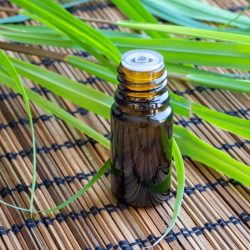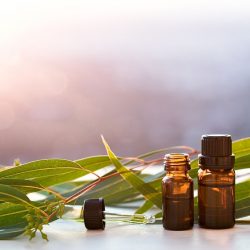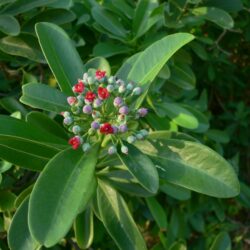In the absence of any specific treatment for chikungunya, aromatherapy is emerging as an interesting complementary solution to offer protection against the mosquito vector. Essential oils, known for their anti-inflammatory and immunostimulant properties, offer a natural response to certain chronic symptoms. After a brief overview of the management of this disease, we will detail the main essential oils active against mosquitoes and chikungunya joint pain. We will also suggest a practical protocol and herbal and gemmotherapy alternatives.
What is the WHO’s position on chikungunya and its management?
The World Health Organization (WHO) supports countries in the surveillance and control of arboviruses through the Global Arbovirus Initiative. With regard to chikungunya, the WHO is involved in :
- Helping countries to confirm epidemics through its network of collaborating laboratories.
- Providing technical support and guidelines for effective management of mosquito-borne disease outbreaks.
- Evaluating efforts to develop new tools, including insecticides and application methods.
- Developing evidence-based outbreak management strategies, policies and plans.
- Providing technical support for optimal case management and effective epidemic management.
- Helping countries improve their case notification systems .
- Organising training in clinical management, diagnosis and vector control in collaboration with its regional centres.
- Publishing guidelines and manuals for Member States on epidemiological surveillance, laboratory analysis, clinical management and vector control.
- Promoting integrated multidisciplinary approaches to the management of arboviroses.
The WHO also encourages countries to develop and maintain the necessary capacity to detect and confirm cases, manage patients and implement communication strategies to reduce the presence of mosquito vectors.
What recent progress has been made in chikungunya research?
Although there is as yet no specific treatment, knowledge of the virus is progressing. Epidemics of chikungunya in Réunion and the French West Indies have prompted epidemiological and clinical research. These studies have led to a better understanding of the disease, its long-term consequences and the risks of transmission from mother to child.
The DAG2 programme, supported by Aviesan, has collected biological samples in Martinique, Guadeloupe and French Guiana. It has created a cohort covering arboviroses such as Zika and Dengue. The CHIKHITA study observed adults during the acute phase of chikungunya and over three years. However, the decline in the number of cases restricted the completion of this study.
Research has identified potential therapeutic targets, in particular the FHL1 protein, which is essential for the virus to enter human and mouse cells. Blocking FHL1 could inhibit infection.
Vaccine development is also progressing. The CHIKV VLP vaccine candidate, developed by the US NIH, uses virus-like particles to induce an immune response, with no risk of viral replication. After a successful phase 2 clinical trial, its effectiveness in epidemic conditions remains to be assessed.
Research shows that plasmacytoid dendritic cells (pDC) play a crucial role in the immune response against chikungunya and dengue fever. Although in a minority, they rapidly produce type I interferons, which block viral replication and mobilise other immune cells.
Treatment for chikungunya focuses on managing the symptoms. It includes analgesics, non-steroidal anti-inflammatory drugs, corticosteroids and sometimes methotrexate or anti-TNF alpha for chronic forms. Valneva SE’s VLA1553 vaccine, marketed under the name Ixchiq, was approved by the FDA in 2023. It is the first chikungunya vaccine for adults at risk.
How can I protect myself effectively against the chikungunya mosquito?
So what should you do? For chikungunya, as for malaria, preventing bites is the most effective treatment. Adopt simple measures: wear covering clothing, use natural repellents, install mosquito nets, and avoid stagnant water. If you are travelling to an area considered to be at risk, you can adopt a preventive treatment based onessential oils, in addition to the appropriate protective measures:
Lemon Eucalyptus E.O
Lemon eucalyptus is an insecticide. Lemon eucalyptus essential oil is effective against the larvae of mosquitoes that carry dengue fever and chikungunya, as well as mites. Its strong, fresh, lemony scent repels mosquitoes thanks to its citronellal and citronellol molecules. In the event of a bite, this substance provides rapid relief thanks to its strong analgesic and anti-inflammatory properties. It is a repellent in veterinary medicine.
Lemon Eucalyptus essential oil also has strong anti-rheumatic properties. Citronellal, a monoterpene aldehyde, makes up more than 60% of its composition and is the main cause.
Lemon Litsée E.O
Litsea repels Aedes, Anopheles and Culex mosquitoes. Lemony Litsée, also known as Exotic Verbena, is distinguished by its lemony scent resulting from a high concentration of citrals (geranial and neral isomers), which make up 75% of the composition of its essential oil. This plant is a preferred choice for its dual role as an insect repellent and insecticide, particularly effective against mosquitoes of the Aedes genus .
H.E Ylang-ylang
Ylang-ylang has a powerful repellent effect on mosquitoes, in particular the dengue vector(Aedes aegypti). However, its insecticidal and ovicidal (egg destroying)action is weak on the dengue, malaria and culex vectors.
E.O. Ceylon Citronella
Citronella is an insect repellent for mosquitoes. Geraniol combined with citronnellol is an active repellent for two to four hours. It repels mosquitoes and wasps (as a preventive measure) and cures mosquito bites.
Ceylon Citronella essential oil belongs to the botanical genus Cymbopogon spp. and is composed in a similar way to Java Citronella. Japanese research has revealed its antifungal activity and identified several compounds. These include geraniol (35.7%), trans-citral (22.7%), cis-citral (14.2%), geranyl acetate (9.7%), citronellal (5.8%) and citronellol (4.6%). Ceylon Citronella is distinguished by its low citronellal content. It contains around 5%, compared with 32% for Java Lemongrass.
Mugwort E.O
White mugwort repels insects, particularly Aedes albopictus (which can transmit dengue fever or chikungunya).
Rose Geranium E.O
Rose Geranium essential oil, also known as Egyptian Geranium, is effective against mosquitoes. Geraniol, present at around 10%, and citronellol, up to 36%, give it its repellent properties. These components make it effective against mosquitoes and other insects.
What natural treatments are there to relieve the pain of chikungunya?
If the tiger mosquito thwarts your vigilance and you are diagnosed with chikungunya, you can use essential oils to promote the healing process and boost your immunity:
Preparation for local rubbing:
- Ravintsara(Cinnamomum Camphora) 5 ml
- Lemongrass(Cymbopogon citratus) 3 ml
- Palmarosa(Cymbopogon martinii var. motia) 3 ml
- Clove tree(Eugenia caryophyllus) 1 ml
- Katrafay(Cedrelopsis grevei) 2 ml
- Apricot Kernel Oil 16 ml
25 drops of the mixture on the chest and 25 drops on the back, 8 times a day for 48 hours, then 6 times a day for 48 hours, then 4 times a day for 3 days.
Caution: doses should be halved for children aged 6 to 12. From 3 to 6 years, reduce the number of drops to 1/4. Same duration. Do not use on children under 3. Not suitable for pregnant or breast-feeding women.
Other natural remedies for chikungunya :
- A homeopathic protocol defined with your doctor to act on the symptoms is a good complement to this advice
- In gemmotherapy, blackcurrant (Ribes Nigrum), for its anti-inflammatory and general stimulating action, and Virginia creeper (Ampelopsis veitchii), which has a more targeted action on the joints, are remedies to consider
But, as always in naturopathy, acting on symptoms should remain the secondary route. The first priority is to support your body’s immune system.
- Echinacea is a highly effective plant for stimulating the immune system
- Ginger is also a powerful antiviral against the chikungunya virus
- Magnesium chloride remains a particularly effective remedy for boosting your immune system. This remedy plays a key role in the treatment of chikungunya. It is taken in large doses, one sachet diluted in a litre of water, throughout the day. This protocol is applied for a few days as an initial plan of attack. Despite controversy and criticism from the authorities, many testimonials confirm its practical benefits.
When used with care and under the supervision of health professionals, aromatherapy can provide effective natural support in managing the symptoms of chikungunya. By combining certain essential oils with phytotherapy, gemmotherapy or homeopathic remedies, it is possible to relieve persistent joint pain, boost immunity and improve patient comfort. While prevention remains the best weapon against this disease, these complementary approaches open the way to more comprehensive, gentle and personalised care.
Sources
- https://fr.wikipedia.org/wiki/Chikungunya#Premier_vaccin_commercialisé
- https://www.msdmanuals.com/fr/professional/maladies-infectieuses/arbovirus-arenaviridae-et-filoviridae/chikungunya
- https://www.occitanie.ars.sante.fr/dengue-chikungunya-et-zika
- https://www.vidal.fr/sante/voyage/maladies-voyage/chikungunya.html
A découvrir dans la même thématique
 Ceylon Lemongrass essential oil repellent
Ceylon Lemongrass essential oil repellent
 Citrus Eucalyptus essential oil, from annihilation to passion
Citrus Eucalyptus essential oil, from annihilation to passion
 How to lose weight and fight against cellulite with essential oils?
How to lose weight and fight against cellulite with essential oils?
 Balsam fir essential oil, king of icy forests
Balsam fir essential oil, king of icy forests
 Saro essential oil, archaic and ancestral plant
Saro essential oil, archaic and ancestral plant
 Mountain savory essential oil, the aphrodisiac of the gods
Mountain savory essential oil, the aphrodisiac of the gods

